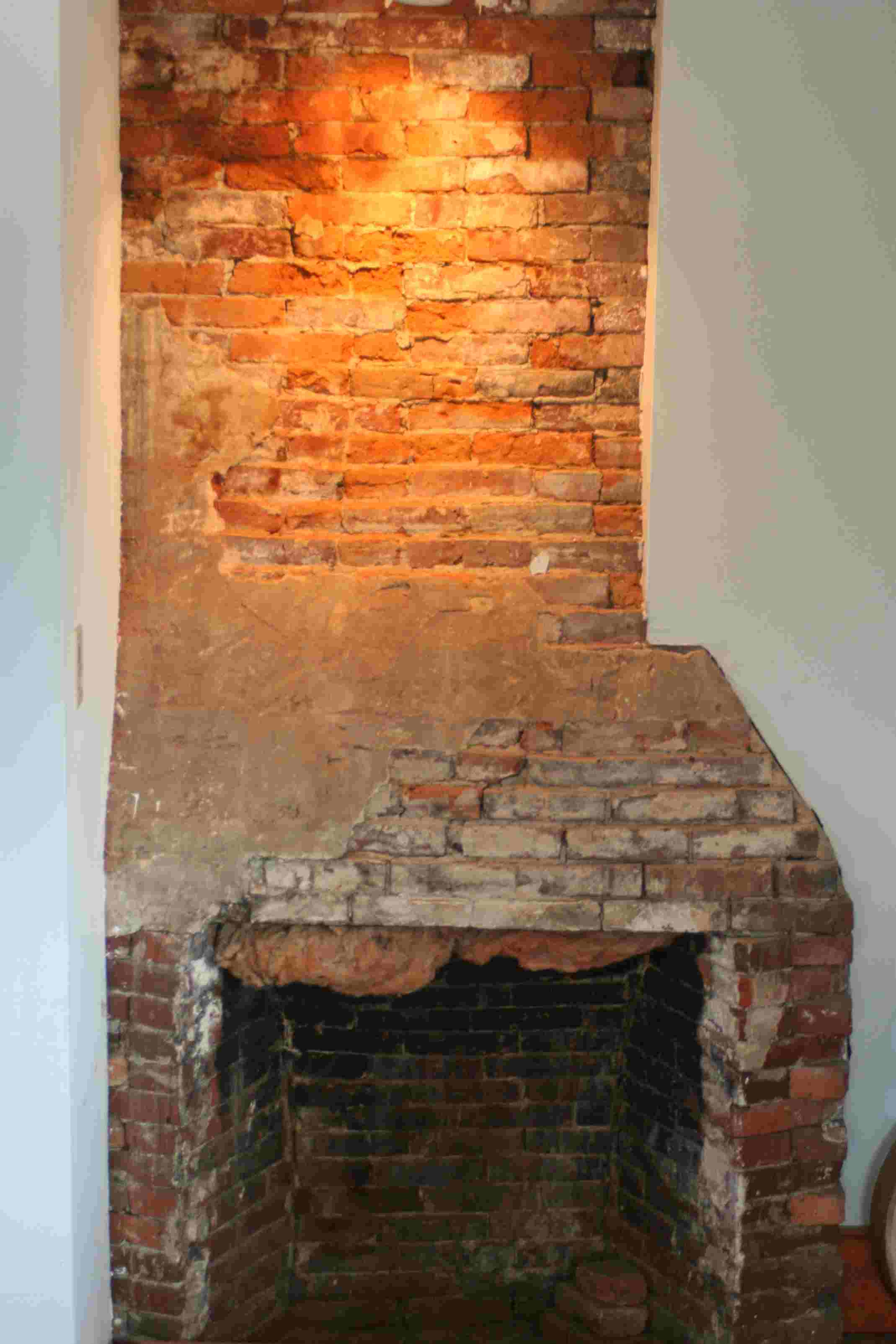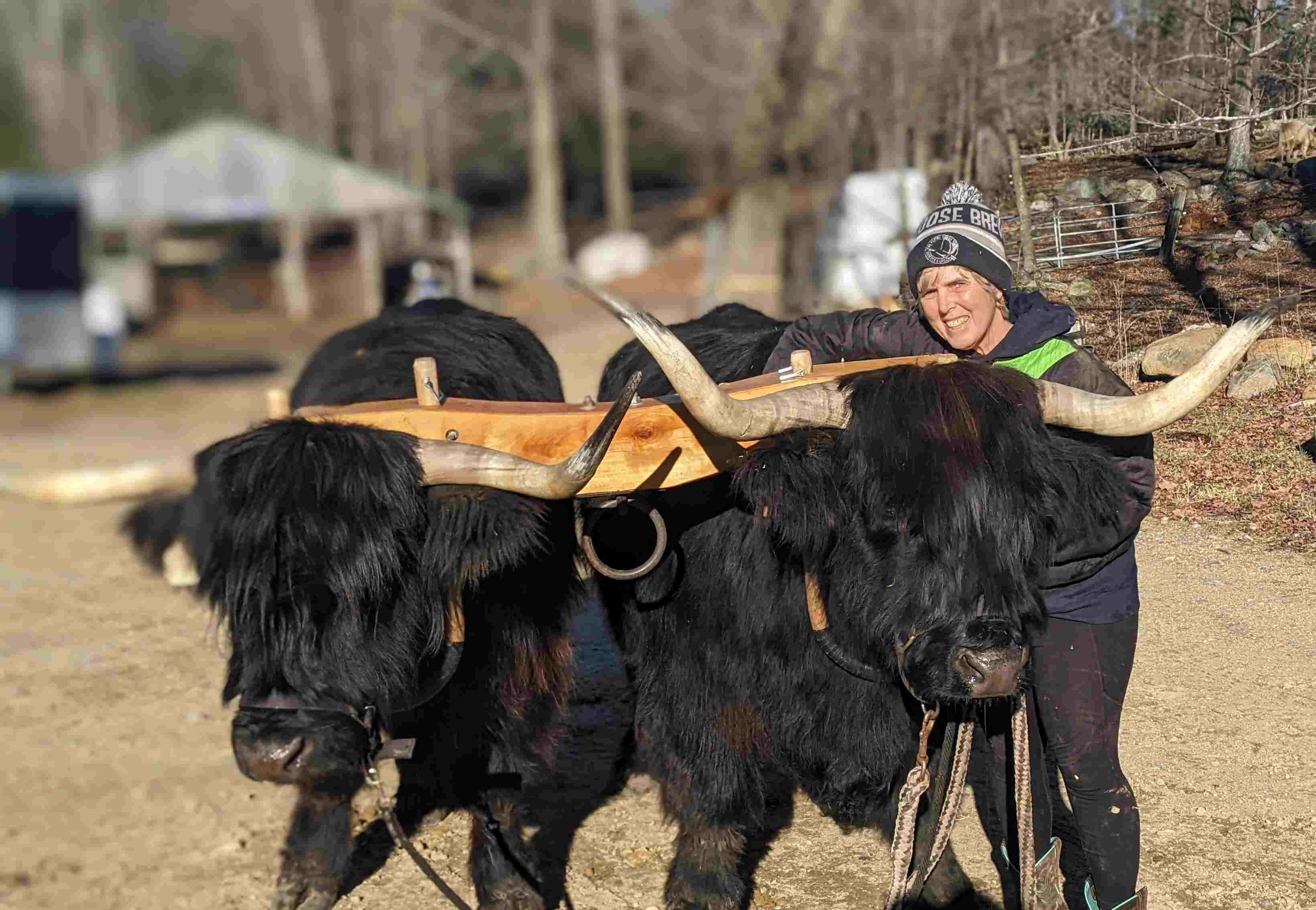How the Old-Time Farmers Made Bricks
posted on
March 19, 2022

When replacing the walls in my bedroom, I uncovered this fireplace and chimney built by Miles Smith in the 1850s. The fireplace no longer works, so former owners immured it. But I consider it a work of art that I love to look at.
"The clay for the bricks in your chimney came from that pit," said former neighbor Bob McLaren as he pointed to the wet area at the bottom of the hill. "They harvested clay where that pond is now."
I looked at the small seasonal pond and pictured the neighbors digging up the clay to make bricks for the three old colonial-style houses on the road to Miles Smith Farm. Built in the 1850s, each house needed bricks for a chimney. Bricks were heavy to transport, which may be why Bob's former home, the place closest to the clay pit, had two chimneys, while the other two houses, farther from the pit, had only one each.
I often wonder at the self-sufficiency of those old-time farmers and have been fascinated by the brickwork in my house's chimney and wanted to know: How would Miles Smith, the man who established my farm, go about producing bricks.
And after a bit of rummaging around online, I found an article with the promising title of "Small Scale Brickmaking in New Hampshire" by James L. Garvin in the Journal of the Society for Industrial Archeology (1994). Turns out, it was quite a process.
Clay from the ground is stiff and almost unworkable, so after workers dug the clay dug out, it was left out to freeze and thaw, with repeated turnings, over the winter. In spring, they poured water on the clay and drove cattle over the lumps to trample them into submission. Sometimes sand was added to reduce the clay's natural stiffness.
Once the clay had the consistency of a stiff mortar, it was ready to shape. The farmer took a brick-shaped mold and lubricated it with water or dusted it with dry sand so the raw brick would drop out of the mold easily. The brickmakers put the clay into the mold and scraped off the excess clay.
The Problem with Rain
The brickmaker laid them out to dry for a few days, then stacked the partially dried bricks in rows under a temporary shelter of boards to protect them from the rain. Drying could take weeks, and damp or cloudy weather often made the bricks too soft to handle.
The Dover Enquirer, July 29, 1887, reported that "the late rainstorm did some serious damage to the brick makers. Unburned bricks are of such perishable a nature that it is almost impossible to prevent losing a large percentage during an ordinary rainstorm, but such a rain as we had Friday, Saturday, and Sunday caused the loss of much dollars worth of property in the yards."
Once air-dried, they stacked the green uncured bricks in a "clamp" or "scove kiln," a large rectangular structure to be fired. Burning took the skill of an accomplished brickmaker. When researching the history of my farm, I learned that Miles Smith was an experienced brickmaker, a skill he may have learned at the Canterbury Shaker Village. He had to continually regulate the kiln temperature by placing or removing shutters over openings to keep the temperature between 1,500 and 2,000 degrees Fahrenheit. The nature of the clay and the amount of oxygen fed to fire determined the bricks' finished color. Most of the bricks in my chimney are red with tinges of black.
After firing and cooling, the workers sorted the bricks. Bricks nearest the fire might be burned black and twisted or fused by the intense heat, and the bricks at the top of the kiln would be still moist and unsuitable for building a chimney. The bricks in the middle were usually best.
This was not a one-person job, so perhaps the three farmer-homeowners on my road worked together to make the 30,000 to 50,000 bricks needed for their chimneys.
Without YouTube
One house on the road has since burned down, but the other two, Bob McLaren's and my farmhouse, are still standing, as are the chimneys. I've been told if I started a fire in one of my house's four fireplaces, the building would catch on fire, so at this point, the chimney is only a reminder of the resourcefulness of Miles Smith and the other farmers of the 1800s. Brickmaking was just one of many skills they had to acquire, propelled by necessity and without instruction via YouTube.



